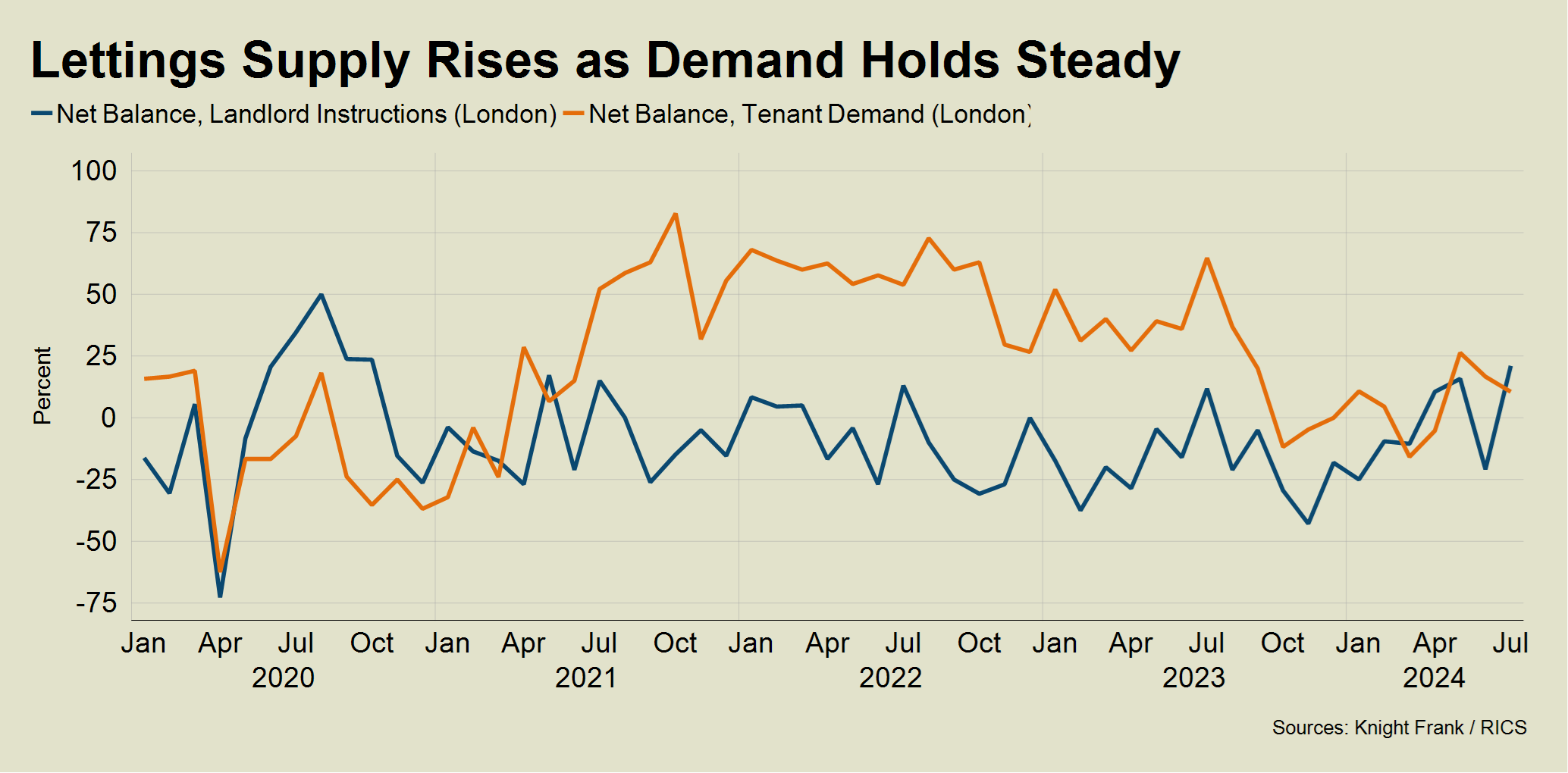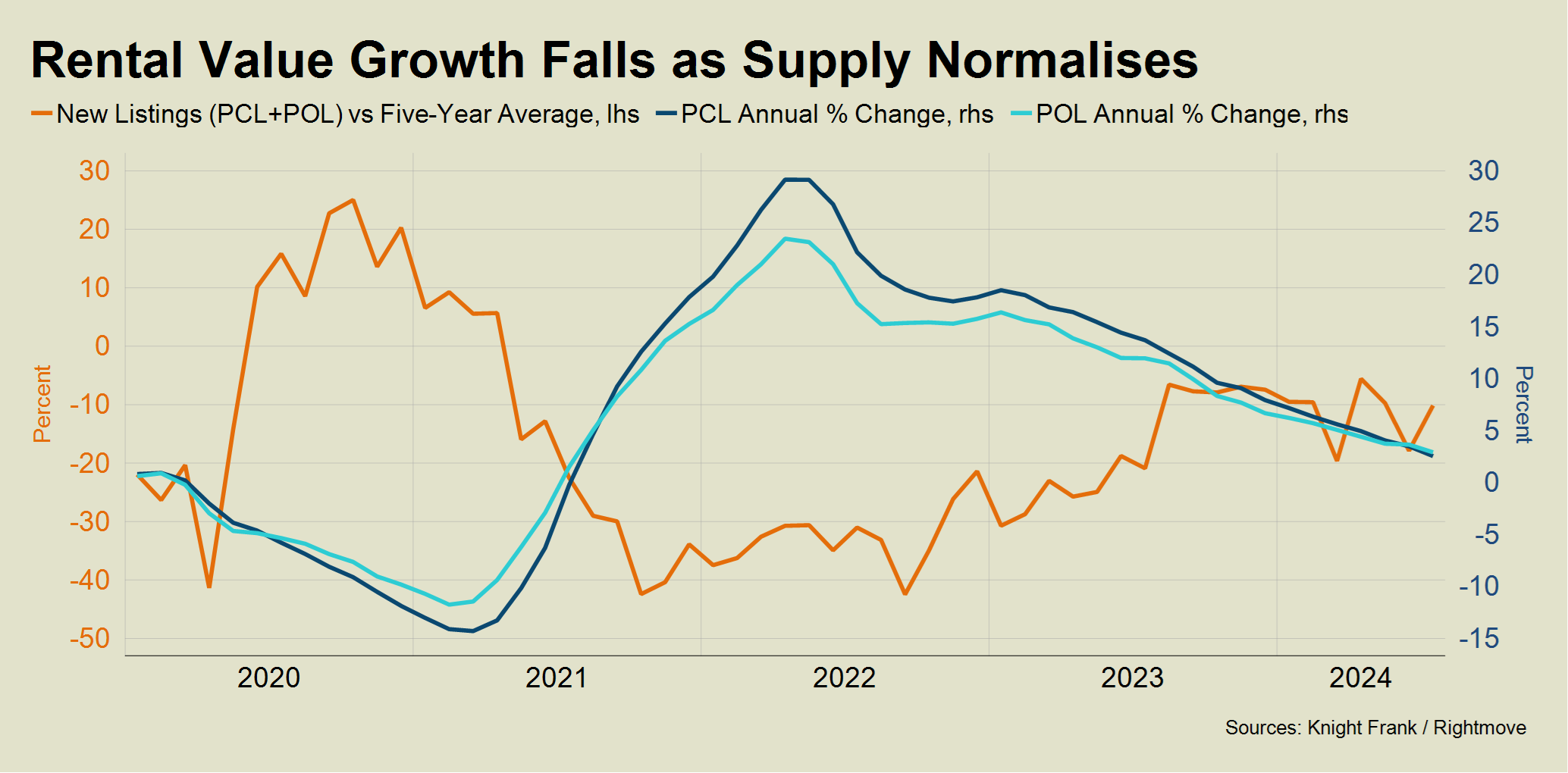Rental Value Growth Falls Below 3% in Prime London as Labour Plan Reforms
July 2024 PCL lettings index: 220.8 / July 2024 POL lettings index: 222.3
1 minute to read
Just as the prospect of tax rises in the Budget is causing uncertainty in the prime London sales market, Labour’s revival of the Renters Reform Bill is doing the same thing in the lettings market.
For now, two things are known.
First, the government will reintroduce their own version of the Conservative Party’s Renters Reform Bill during this Parliament. Second, it is talking tougher on landlords.
Measures could include making it harder to evict tenants and tighter rules around the green credentials of lettings properties, according to recent press reports.
Meanwhile, capital gains tax could rise following October’s Budget.
If enough landlords sell up because any new rules are too financially punitive, it would put upwards pressure on rents.
Ironically, the speculation comes at a time when supply and demand are re-balancing after several tumultuous years, which is putting downwards pressure on rents, as both charts show.

The net balance of landlord instructions in London in July was 21, the highest it has been since October 2020, the monthly RICS survey found last week. A score above zero indicates more respondents are reporting a rise than a fall.
The long-let market was flooded with short-let properties during 2020 due to Covid restrictions around holidays.
As supply continues to recover, the high rental value growth of recent years has self-corrected, as the chart below indicates.

Rents rose by an average of 2.5% in the year to July in prime central London. It was the first time that annual growth has been below 3% in three years. In prime outer London, the increase was 2.9%, which was also the lowest figure since July 2021.
As political aspiration lives alongside economic reality in the lettings market, there is certainly the possibility of friction, as we explored last month.